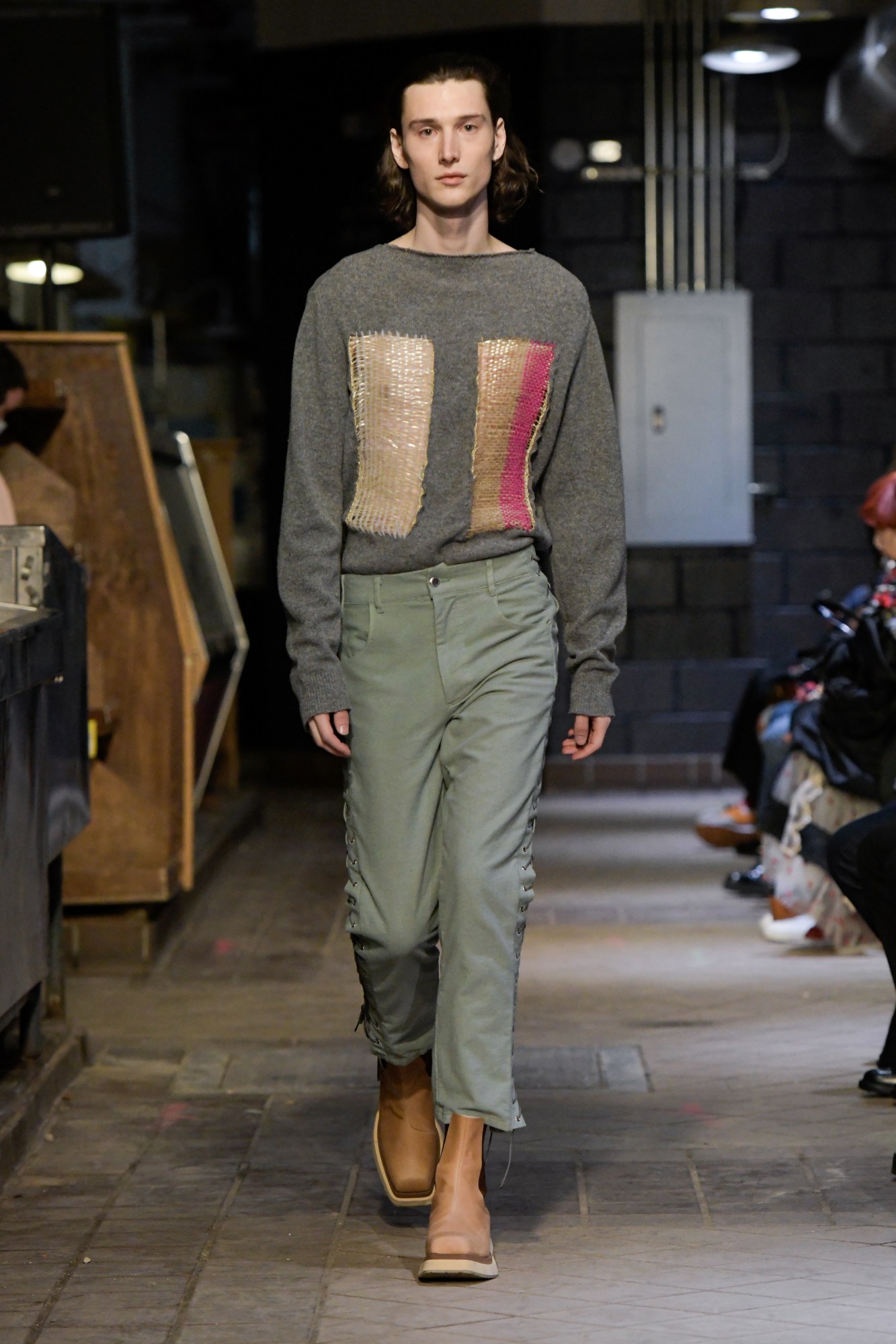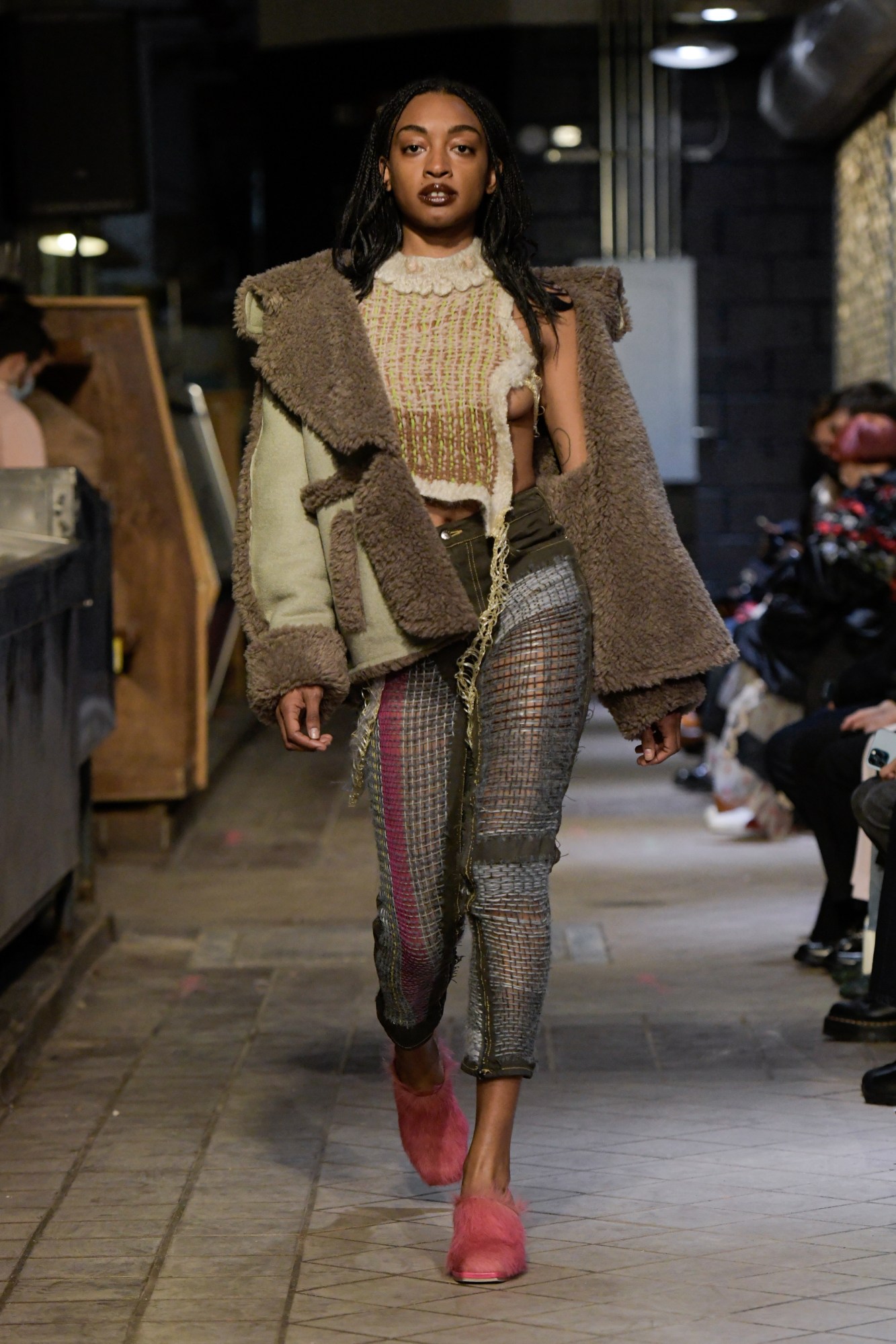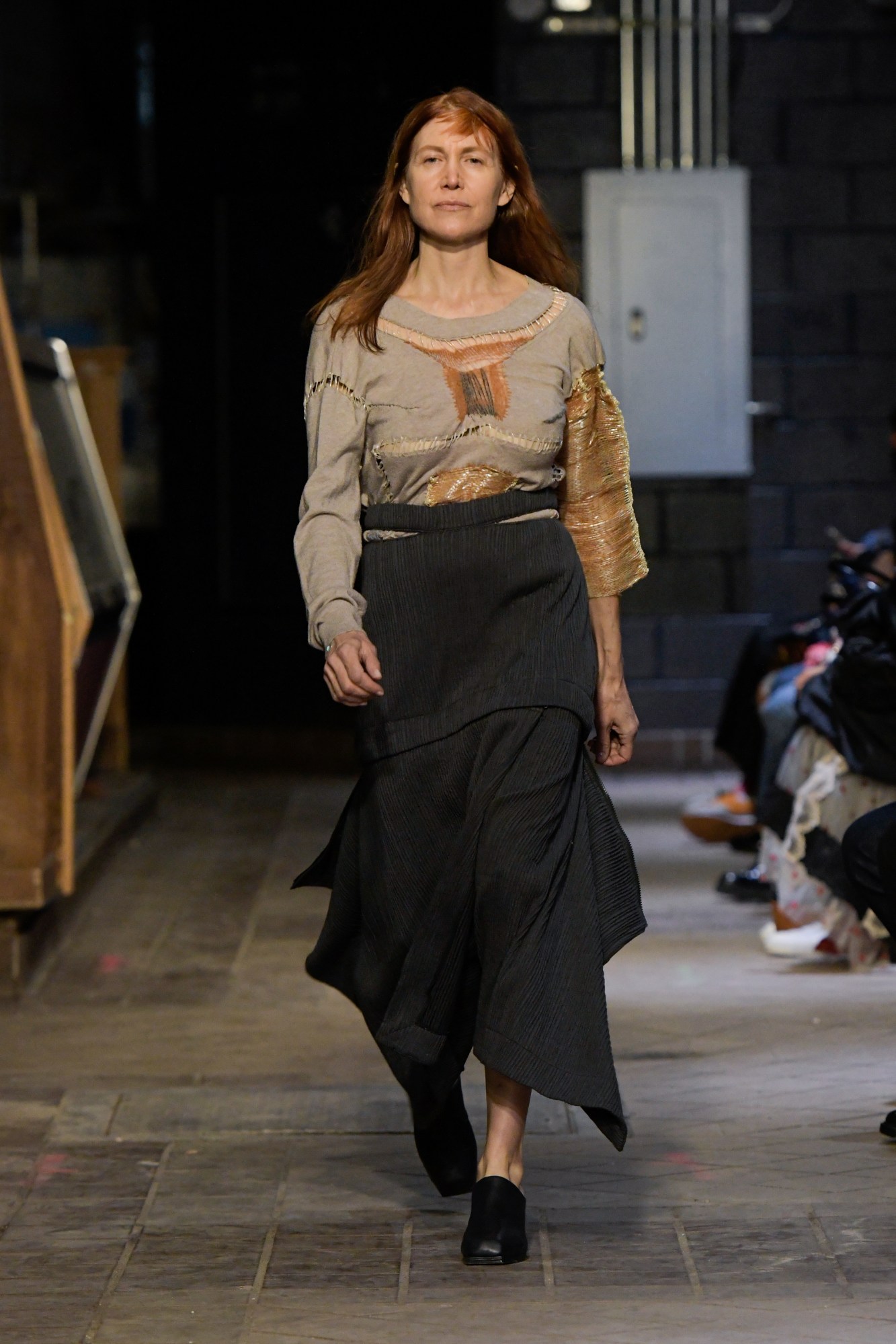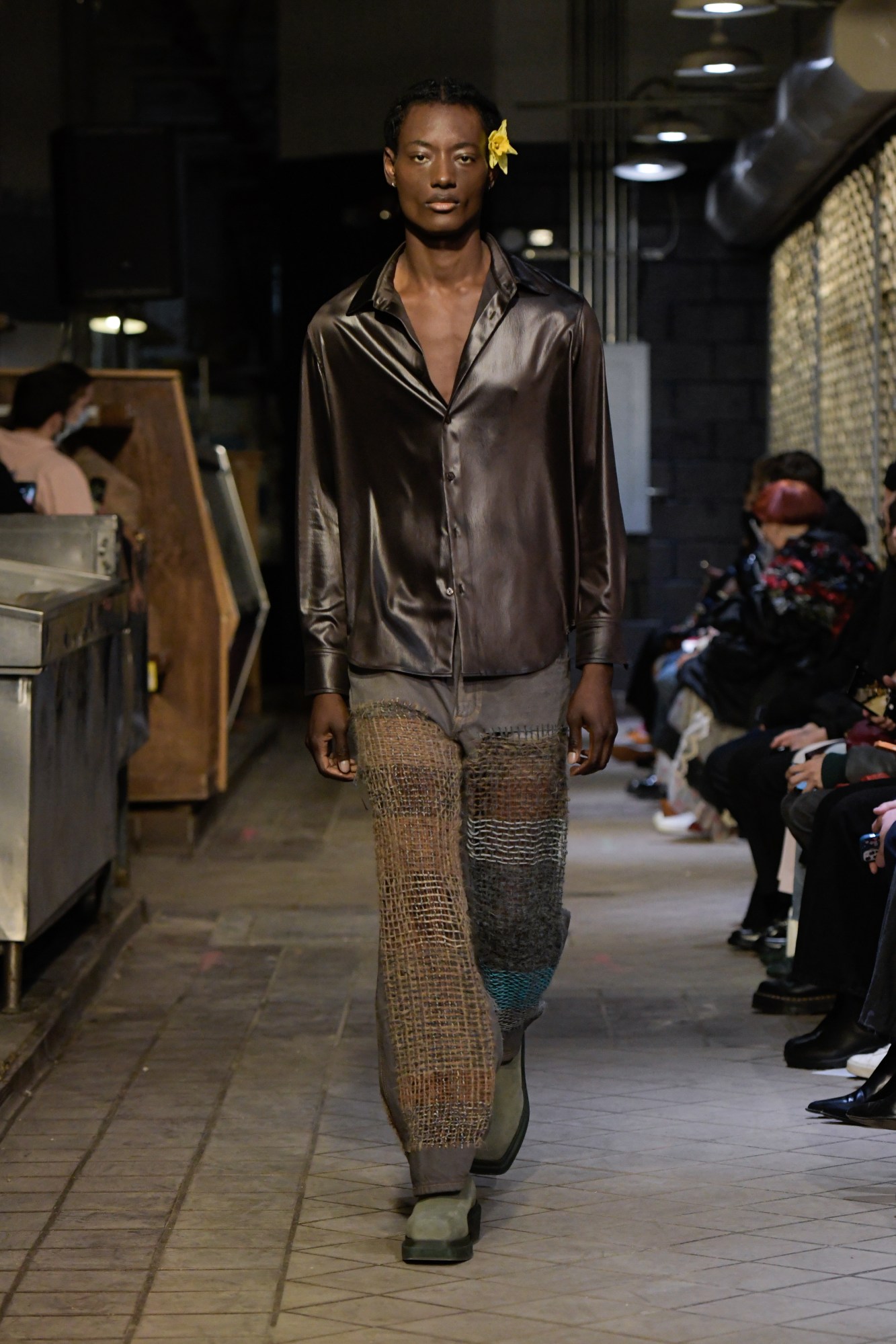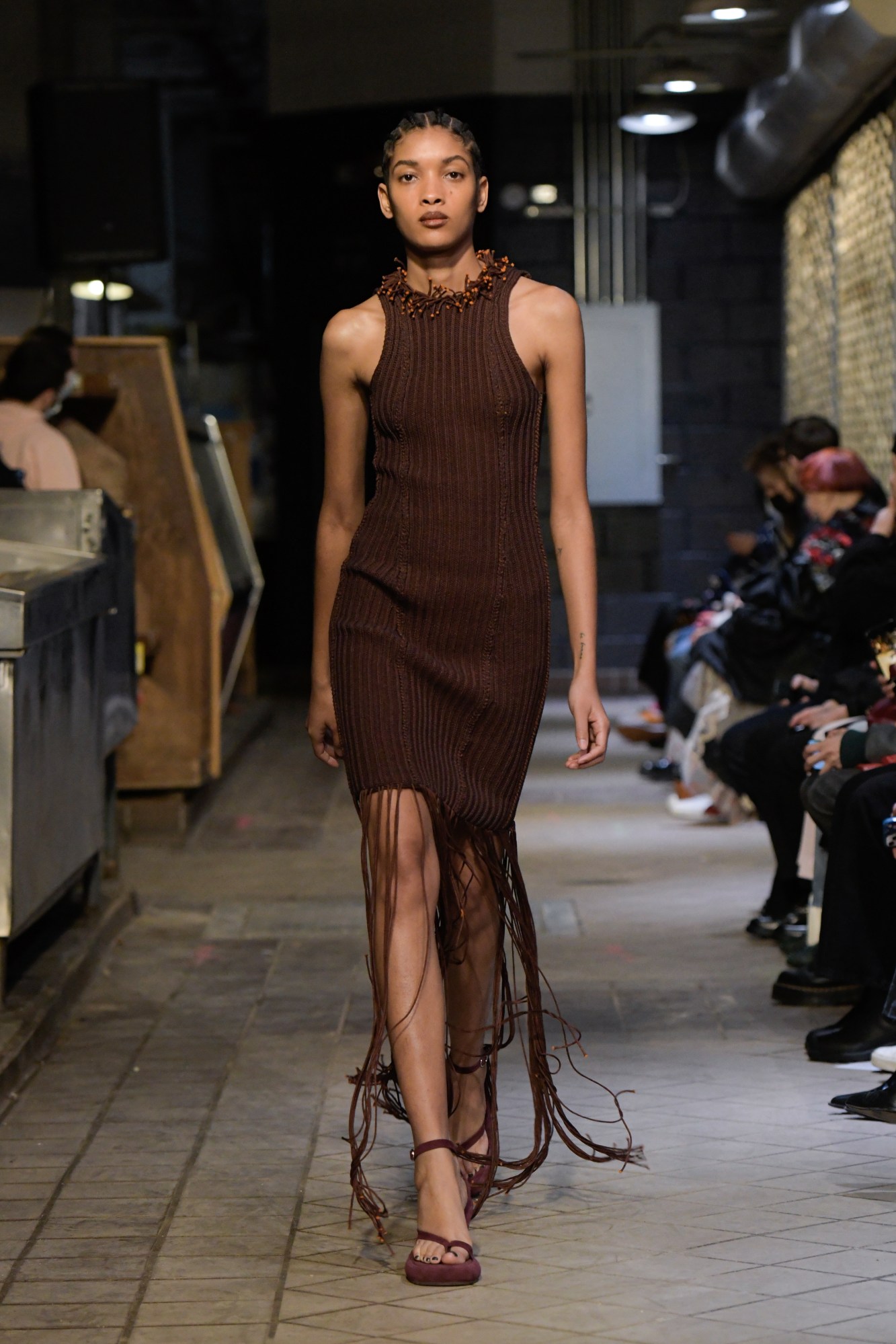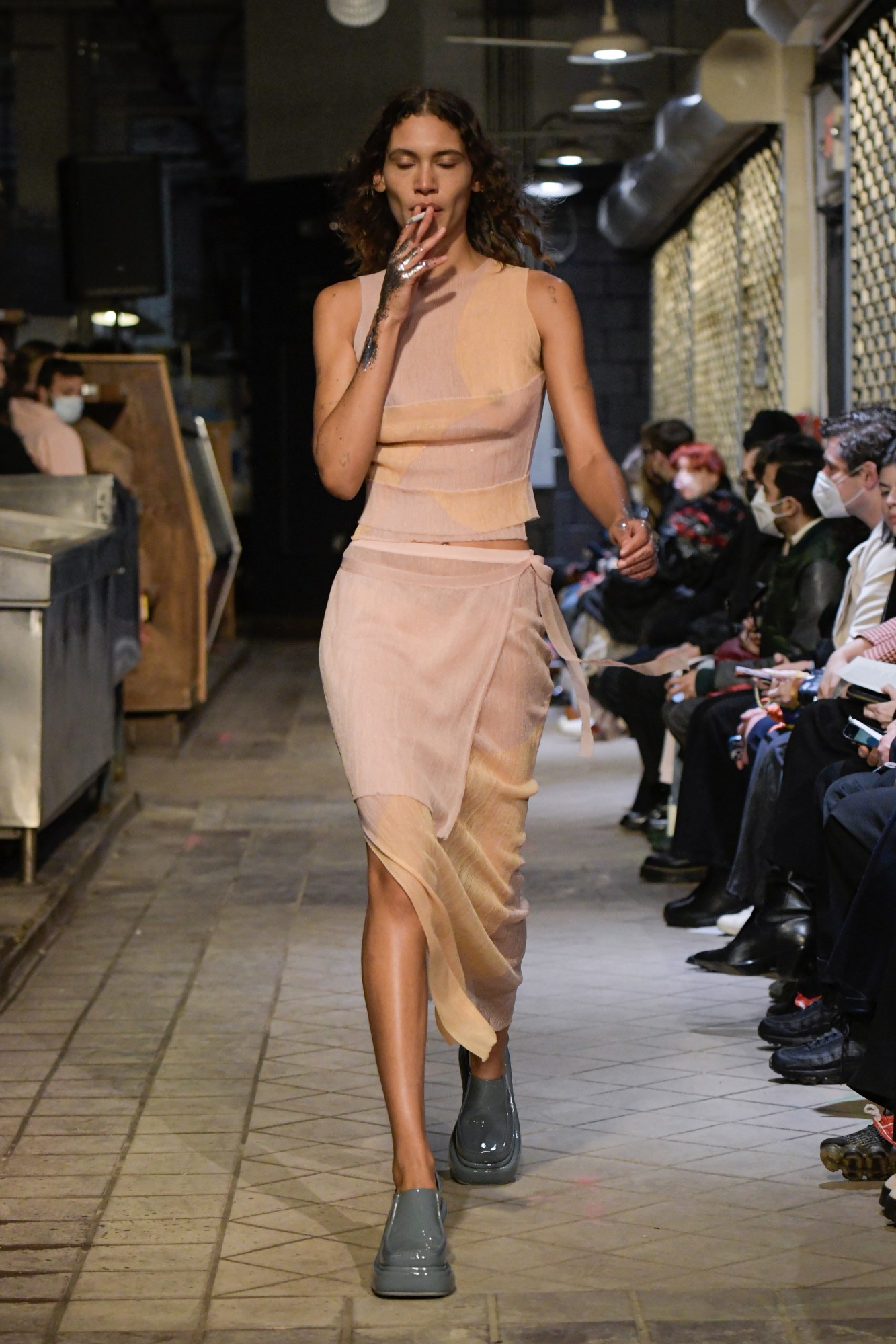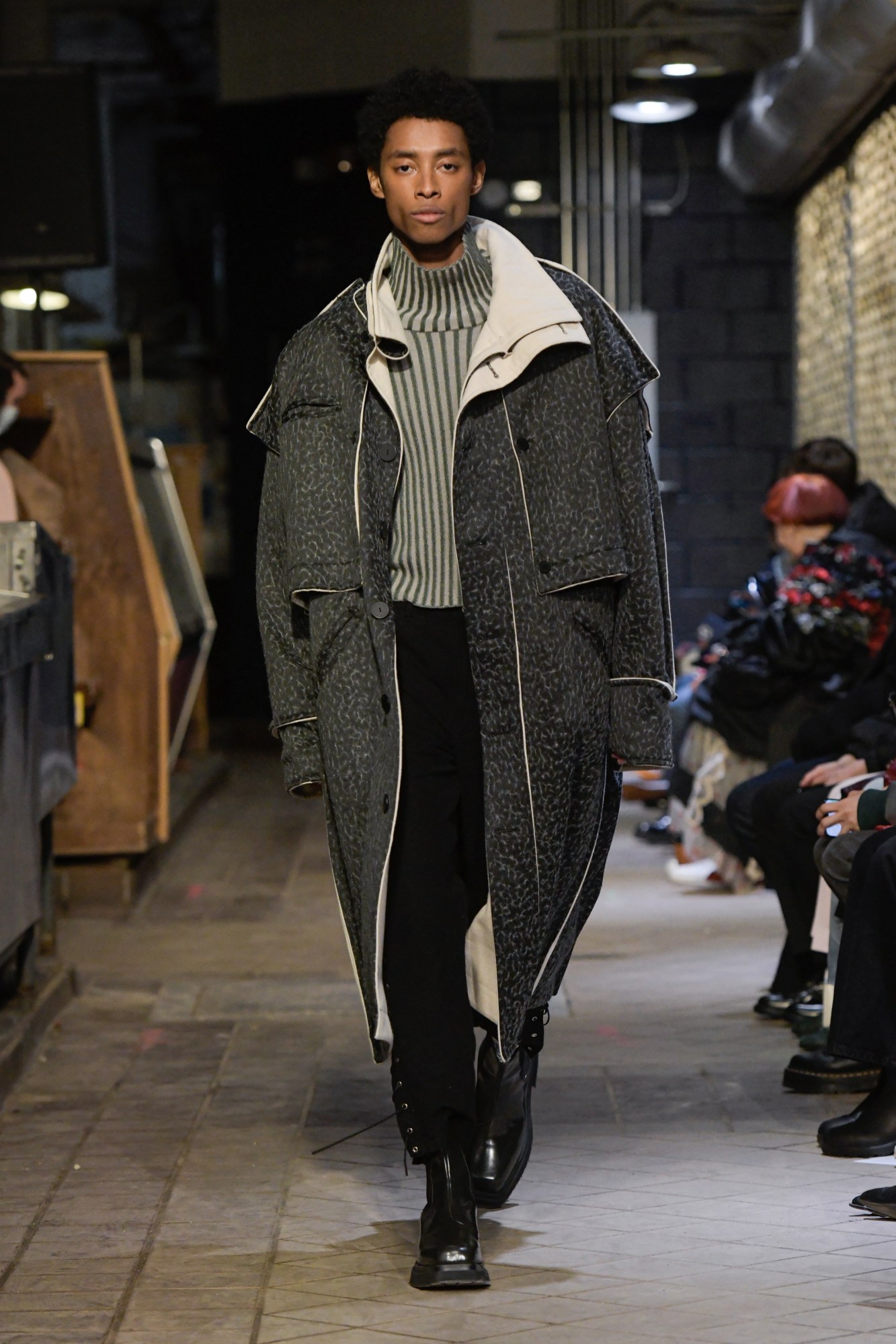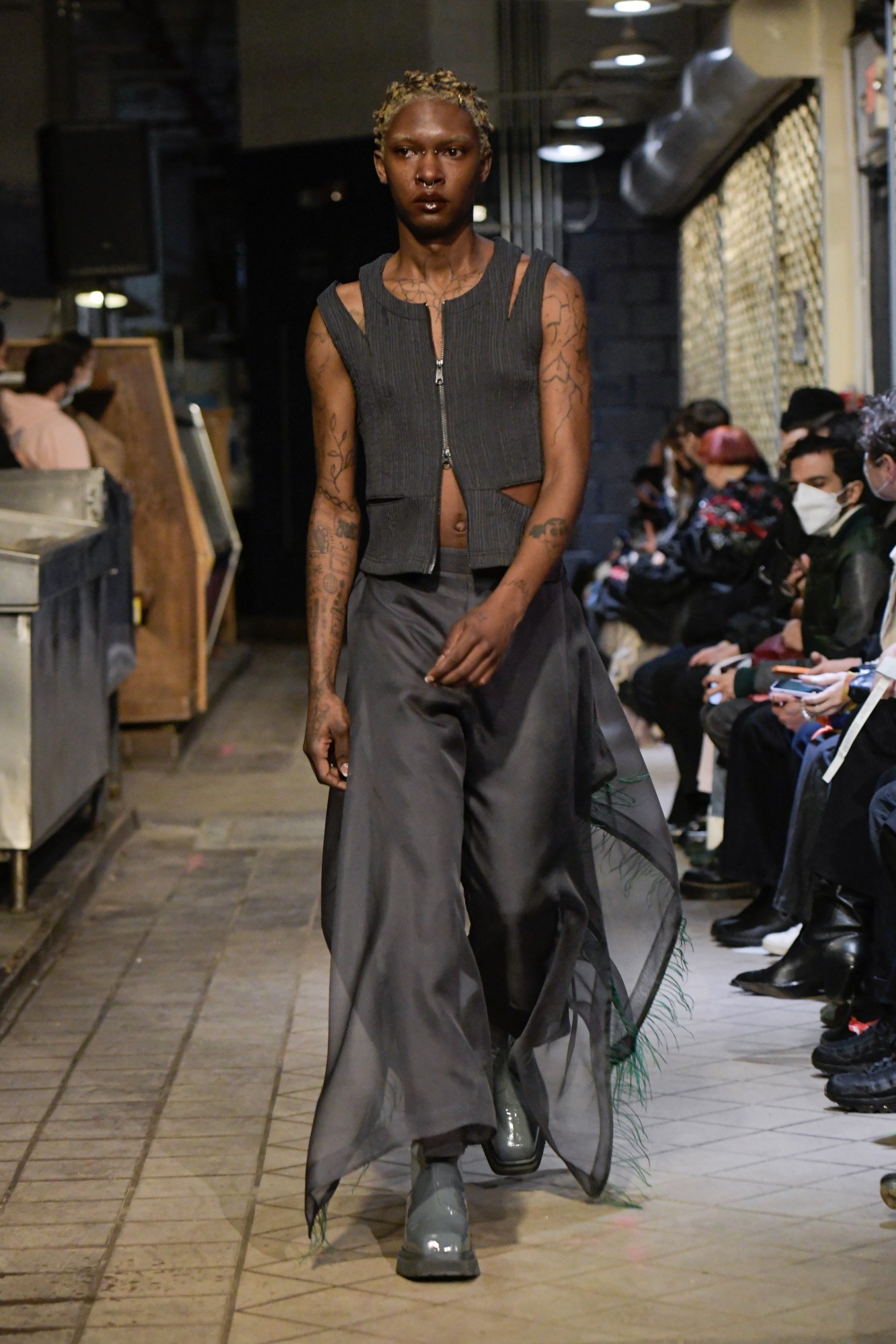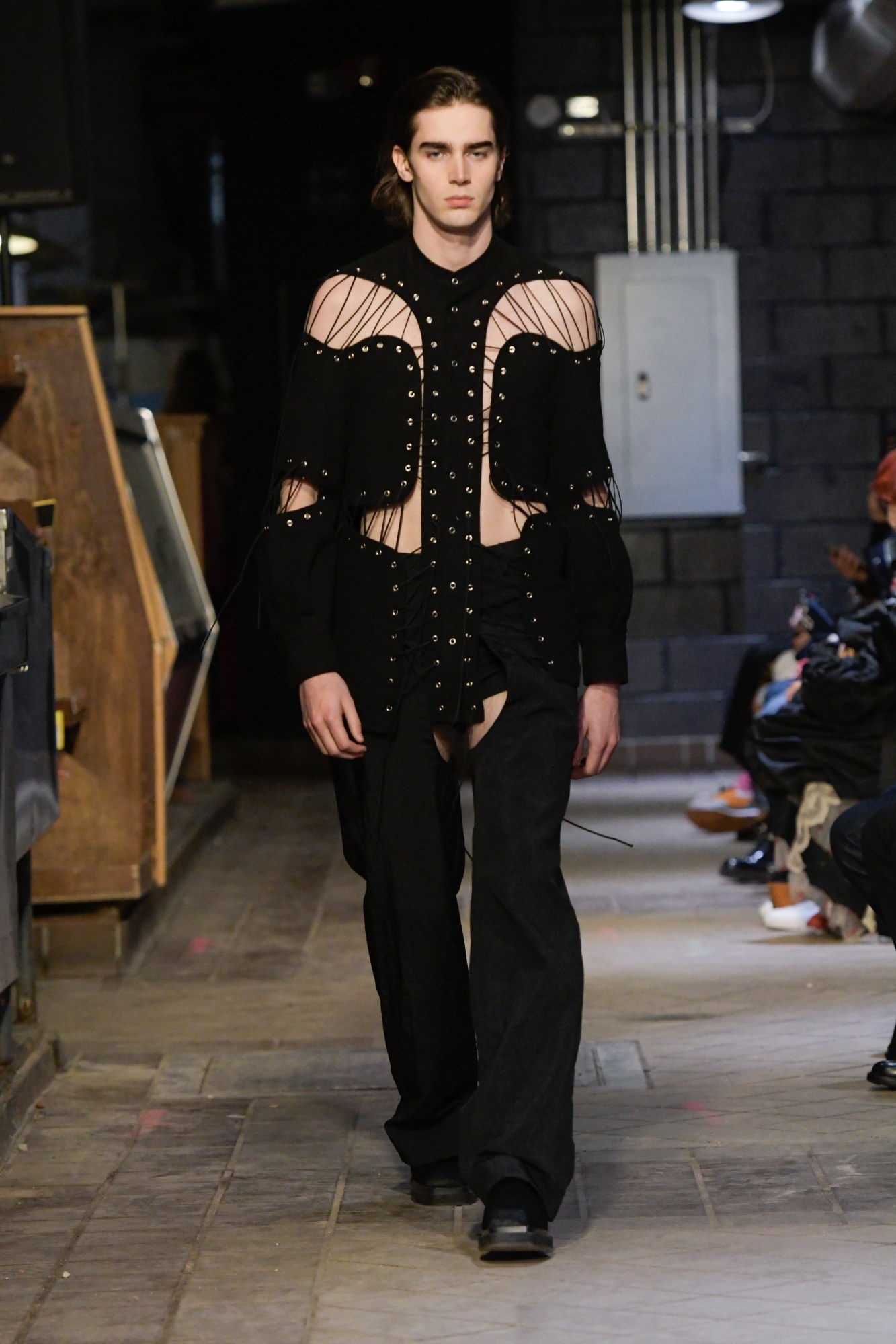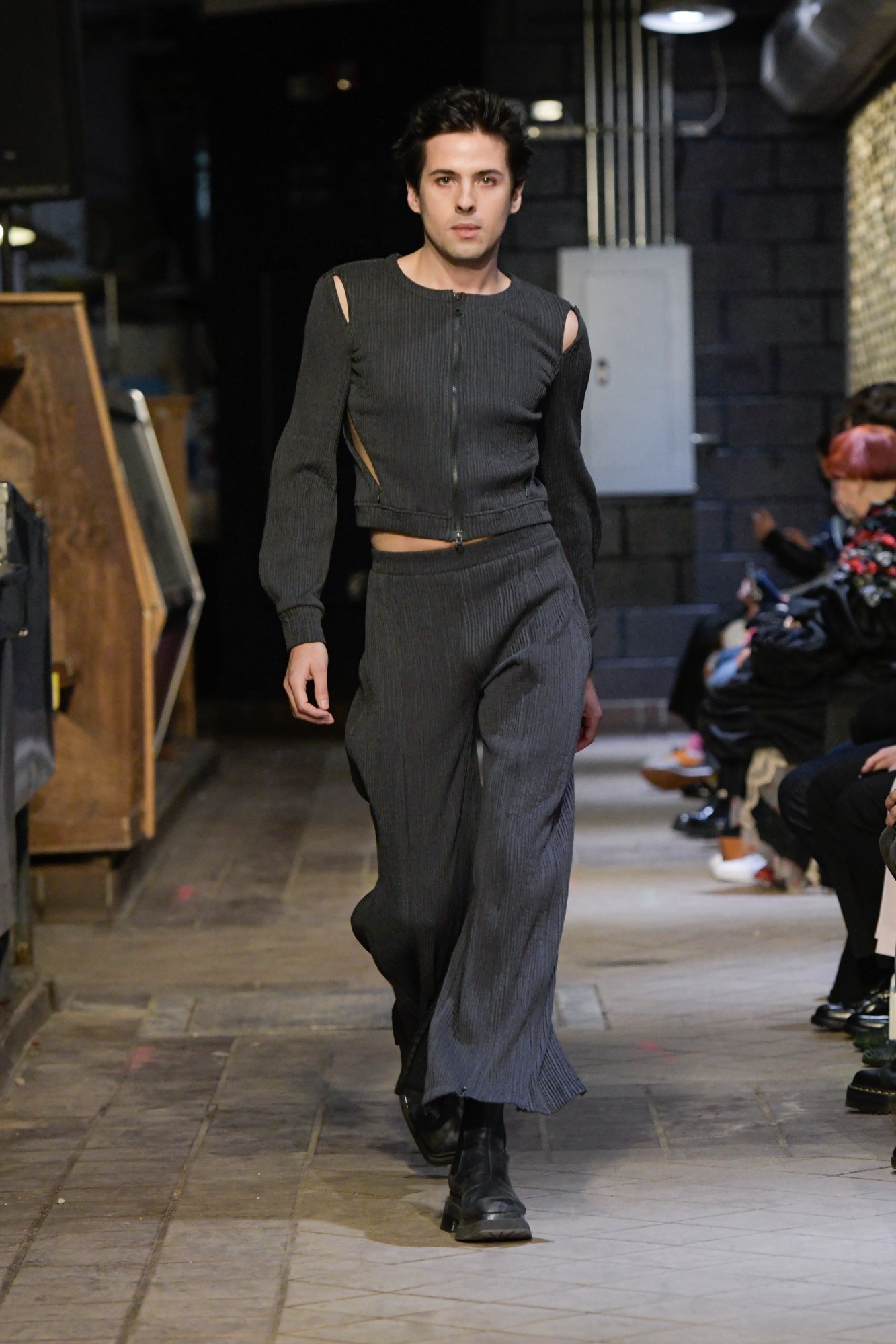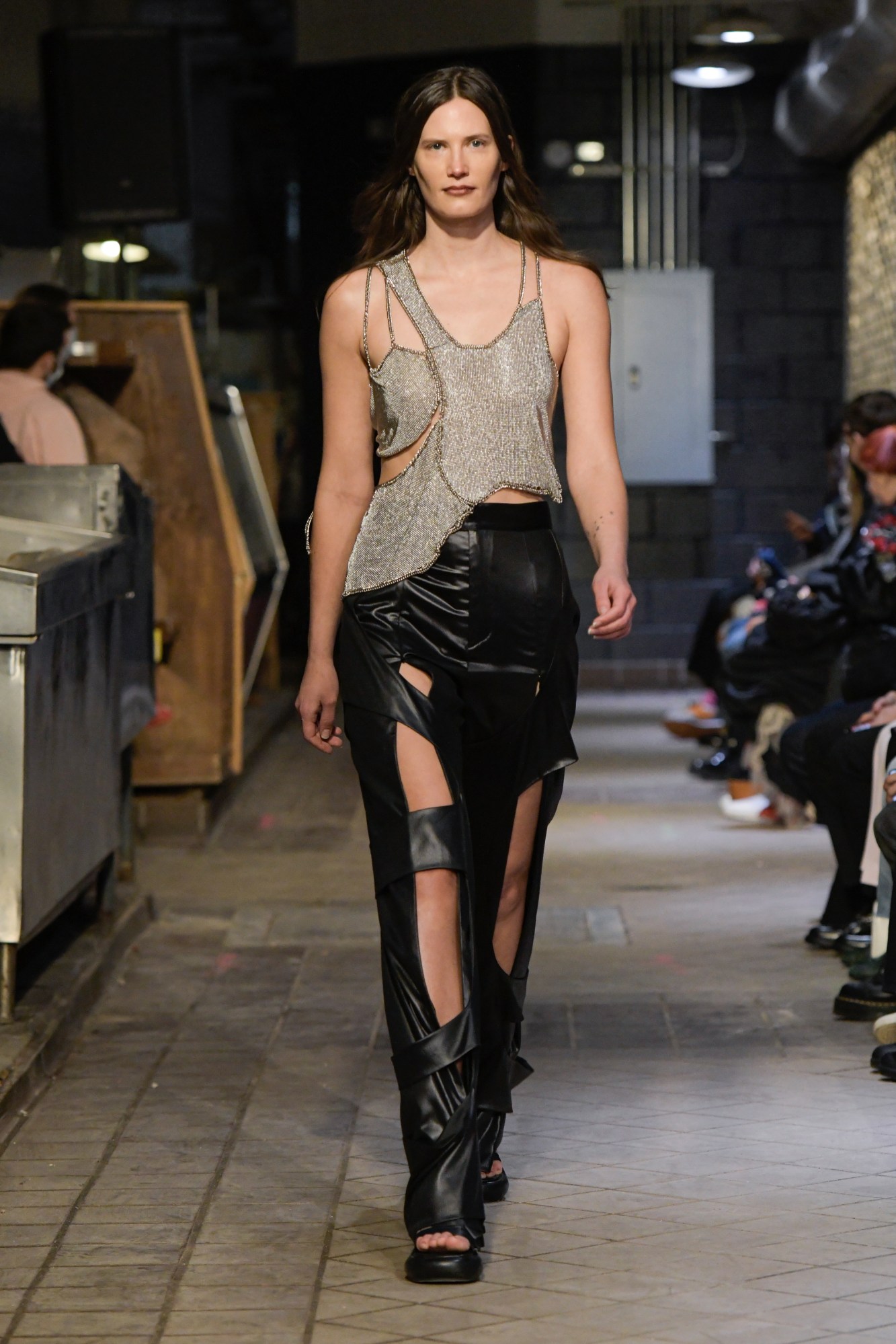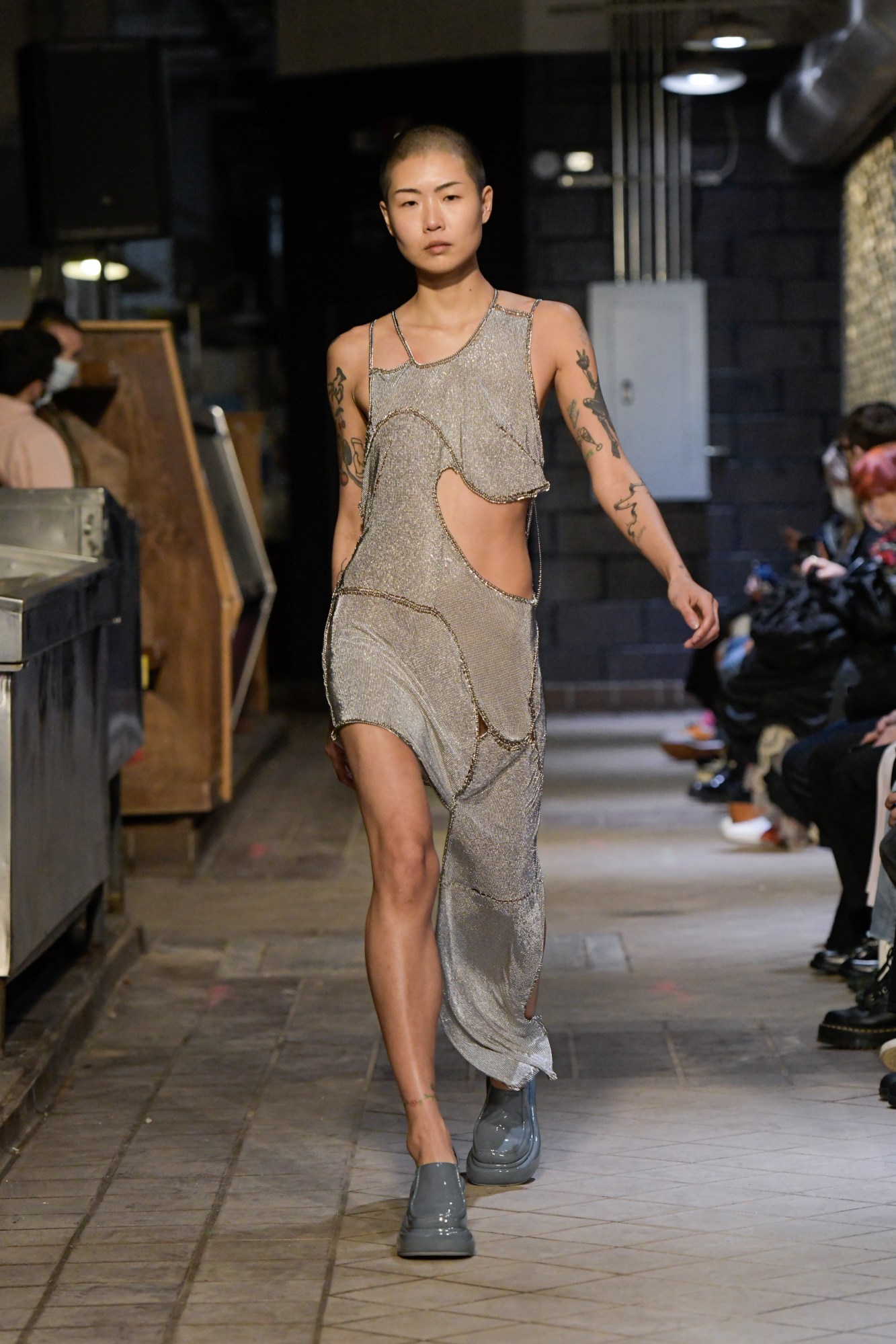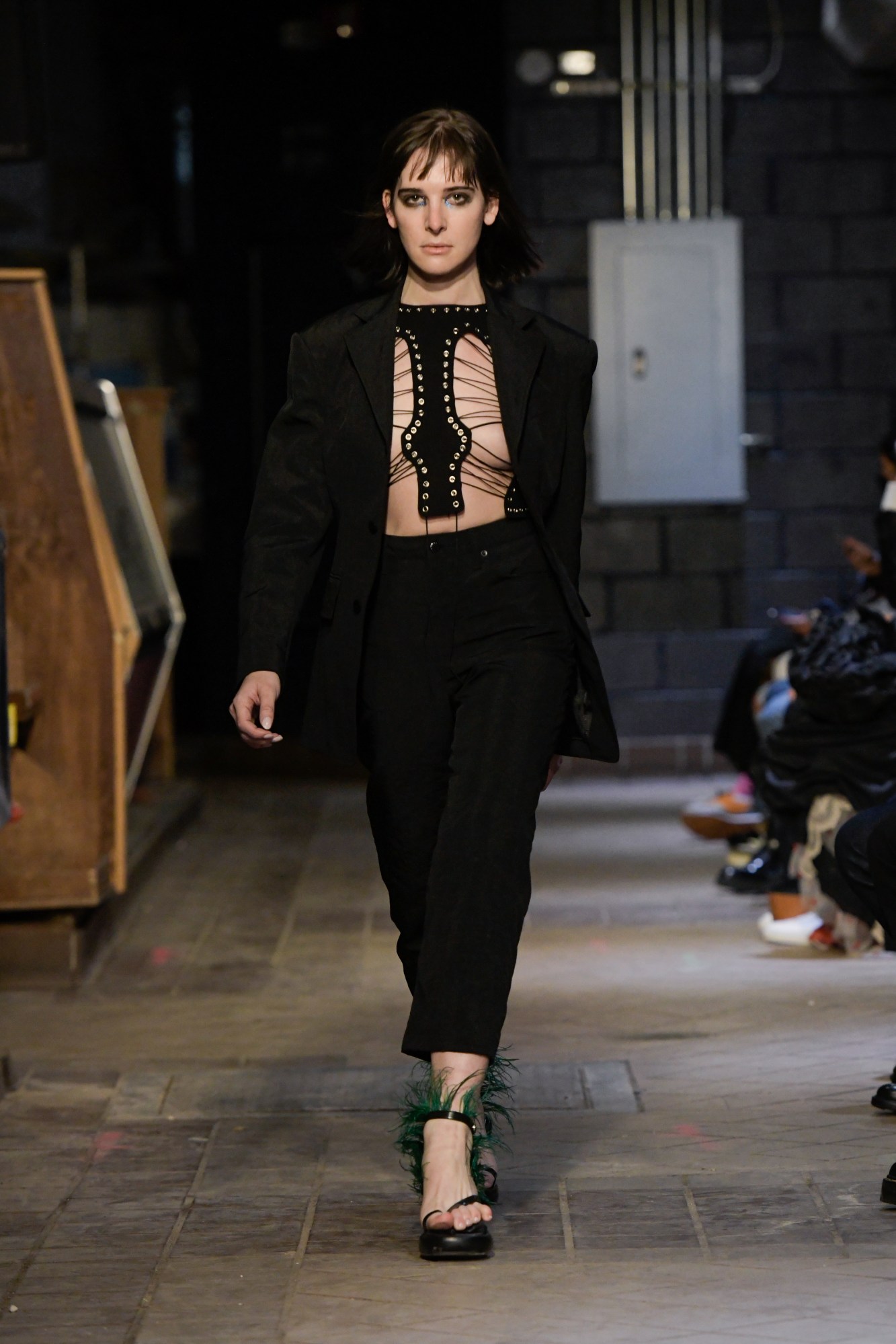On Saturday night, Eckhaus Latta presented its AW22 collection in the halls of the Lower East Side’s old Essex Market. Models — familiar faces including Okay Kaya, Hari Nef and Paloma Elsesser — stalked its former aisles, amidst abandoned stalls and old, empty refrigerators. Editors, buyers and critics sat tucked between wooden shelves, once replete with fresh produce (Sunkist oranges, 2 for $1; butternut squash, 99¢/lb.). It was the Brooklyn-based label’s first Manhattan-held show in ten seasons and the evening’s decampment, the choice of locale was anything but haphazard. The old Essex Market, an LES stalwart for over seven decades, closed its doors in early 2019; soon, its plain brick abode will be torn down, replaced with a block of condominiums. “We’ve been trying for a long time to secure this location. It’s very timely, very New York City,” says Mike, hours before curtain call. “It has that sense of history and time, something that’s constantly evolving and changing. That sense that nothing is permanent here.”
Like the venue of its AW22 outing, Eckhaus Latta is also an emblem of the city it calls home. Unlike the fate of the old Essex Market, however, the bi-coastal label is symbolic of a more hopeful, democratic form of progress. This season, Mike and Zoe celebrate ten years co-helming the label they created together. And for ten years, the duo have ushered American fashion into the present moment, their arty, avant-garde vision shifting the industry needle towards authenticity and inclusivity with pioneering genderless designs and non-model casting practices.
Eckhaus Latta’s industry-wide influence extends beyond clothes and shows, however. Among culture-shifting moments, the label has many. Mike points, for one, to the label’s 2018 show at the Whitney Museum of American Art: “an expression of our involvement in the art world, something that felt significant.” At its inception, Mike and Zoe, grads from RISD’s sculpture and textiles programs, respectively, envisioned Eckhaus Latta as less of a fashion label and more of an art project. The duo’s Whitney show– half-retail set-up, half exhibition — was a triumphant culmination of the designers’ efforts in merging both worlds of clothing and art.
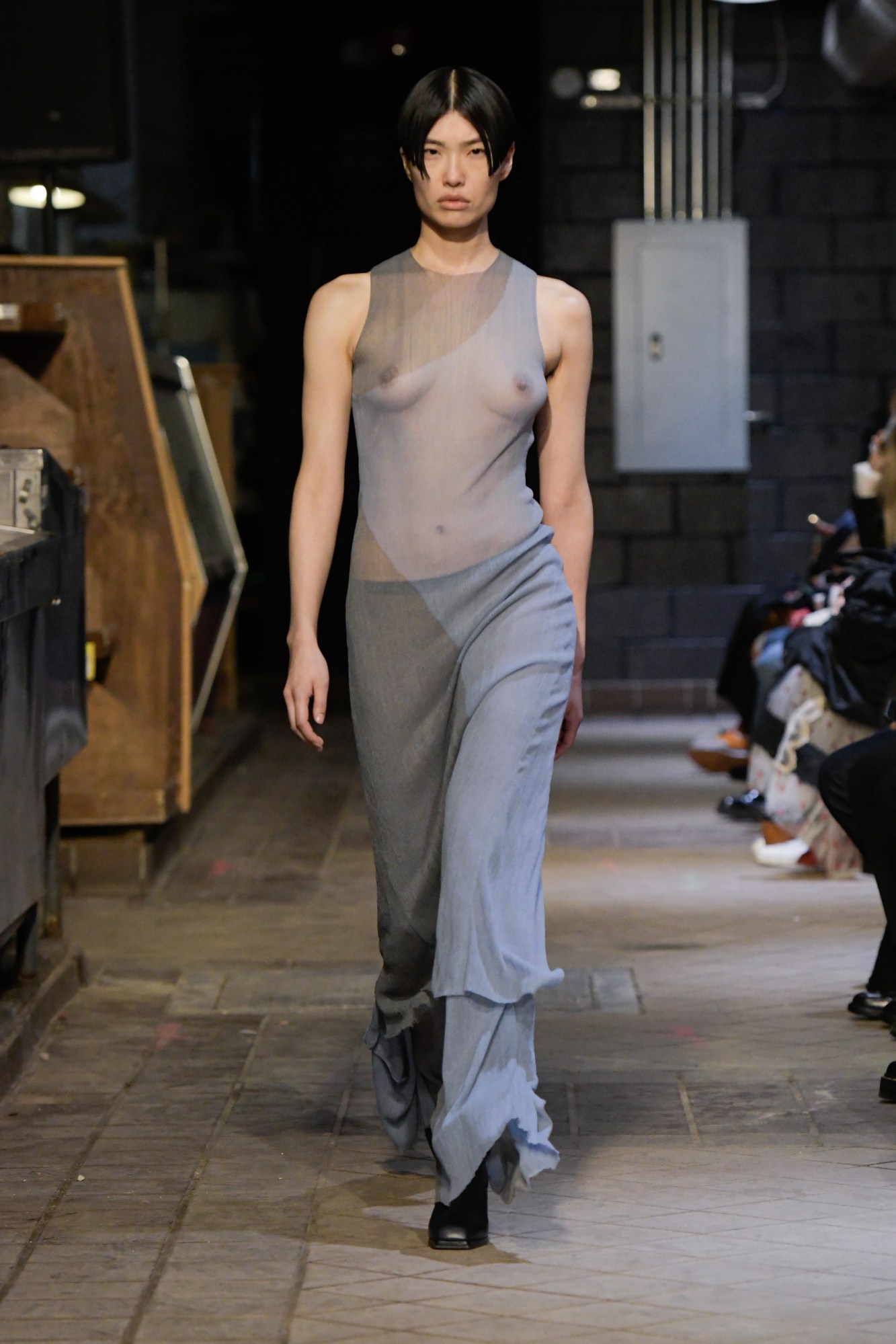
On the topic of defining moments, Zoe switches tracks, bringing up the label’s debut ad campaign, or “the sex campaign,” as she refers to it. The controversial photographs, shot by Heji Shin, featured real-life couples having sex, wearing Eckhaus Latta’s SS17 garments in various states of undress. A play on the old advertising adage “sex sells,” the campaign promoted a sex-positive message to the label’s young audience. Moreso, however, it represented — boldly and blatantly — the label’s uncompromising sense of authenticity, of depicting ‘the real’ in an industry where its portrayals are often few and far between.
“Fall/Winter 2016 felt pivotal in a way that I still don’t know how to put my finger on,” says Mike, referring to a show held in MoMA PS1’s geodesic performance dome. Perhaps it’s because the collection marked a newfound freedom for the formerly fledgling label, having grown, fully, into their new craft. Or maybe the reason escapes him because Eckhaus Latta’s influence has progressed as more of a slow burn than can be attributed to a single event. “It’s an attitude and a different take on fashion,” says Zoe. “When we started, we felt we were marching to the beat of our own drum and alone in whatever it is we were doing. Now, it feels more defined and natural to us, whatever language we’re speaking.”
For FW22, ten years on from the label’s 2012 debut, Mike and Zoe have fully refined this shared language. “There’s a familiarity to this collection,” Mike says. This season, the duo continue to explore, expand and develop their hallmark themes — deconstruction and materiality; however, the offering is no retrospective. “We didn’t want to make a #TBT collection because we’re still genuinely excited about making clothing. But I will say, looking at the collection it does feel very self-referential,” Zoe explains.
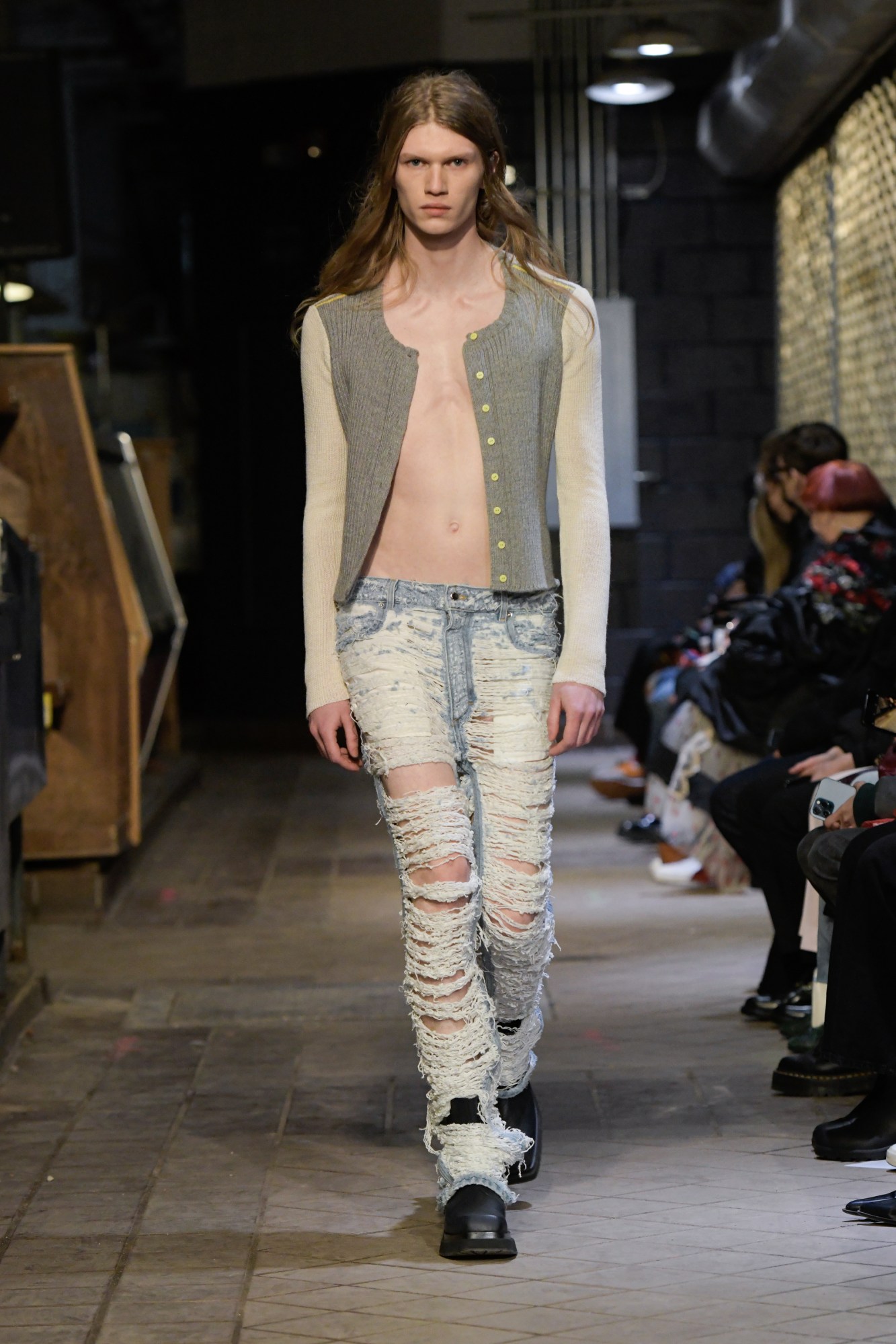
The excitement Zoe’s referencing is felt in the offering’s exuberant sequinned garments: sexy pieces with raucous hemlines that play across the body in shimmering undulations. Also, the cut-outs, this season, more seductive than ever before. A pair of modular cargo pants flash bits of inner thigh; the openings on a dress snake around the waist to reveal a curve of hip-bone; trousers that unzip all the way up the back, for the wearer who wants to give a peek of cheek.
Speaking to Eckhaus Latta’s singular signatures, the duo’s hallmark handi-work weaves itself throughout the collection with a much more generous hand than recent seasons. For AW22, the label’s best-selling EL jeans are punctuated with colourful, open-knit panels. Backstage, just hours before the show, one of the collection’s final dresses, a metal-mesh masterpiece, is being closed up with a pair of pliers. “[Our handi-work] is really important to us. And it’s something we’ve gone in and out of throughout the years, especially as we’ve grown as a company,” Mike says. “This season, we both had projects that were very much labours of love.”
“When we started, we had no idea what we were doing, nor how to make clothing,” Mike continues, describing the label’s humble beginnings. “It’s been a really wild learning experience and creative endeavour. There are a lot of ideas that have grown and evolved over the years that remain core to what we do. It’s fun to explore those ideas and to now have a breadth of work that can reverberate as we move forward. Things that we pick up and things that we leave.” Like the cityscape of New York City, with Eckhaus Latta, some things change, and some things stay perfectly the same.
